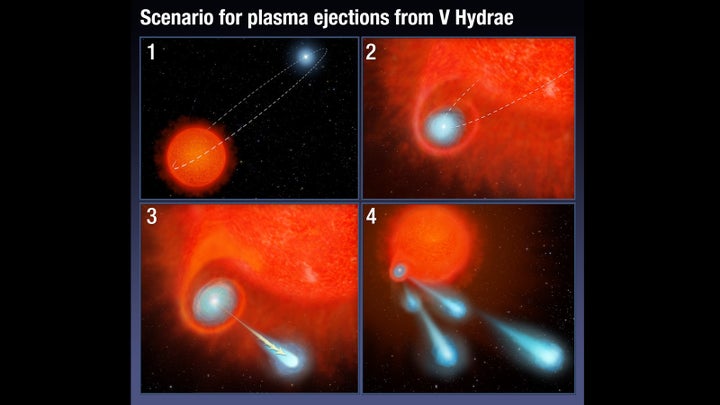The NASA Hubble telescope has detected shooting ‘cannonballs’ twice as big as the planet Mars hurtling through space.
The superhot blots of gas, over nine thousand degrees Celsius, are moving through the solar system so quickly that it would only take them half an hour to get to the moon from earth.

According to astronomers this ‘cannon fire’ has continued once every eight and a half years for at least the past 400 years, but this is the first time NASA has been able to locate the plasma balls in action.
In spite of the live show, NASA still had a difficult time working out the origin of the fireballs, as they couldn’t have been ejected from the V Hydrae host star.
Located 1200 light-years away from us, the red giant would have needed help launching the cannonballs. Instead the scientists believe a nearby companion star served as their starting point.
“Red giants don’t have accretion disks, but many most likely have companion stars, which presumably have lower masses because they are evolving more slowly,” said Raghvendra Sahai of NASA’s Jet Propulsion Laboratory.
In the late stages of life, bloated red giants (such as V Hydrae) lose their nuclear fuel that made them shine – shedding vast amounts of body mass.
The companion star would have entered the outer atmosphere of the bloated, dying star, and sucked in material that settled as an outer disk and allowed the ‘cannonballs’ to launch.
Sahai said: “We knew this object had a high-speed outflow from previous data, but this is the first time we are seeing this process in action.”
